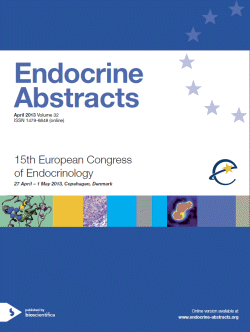Searchable abstracts of presentations at key conferences in endocrinology
Symposia
New data treatment of hyperglycemia
ea0032s9.1 | New data treatment of hyperglycemia | ECE2013
GLP-1 analogues
Since 2007 GLP-1 receptor agonists (GLP-1 analogues or incretins) are used for the treatment of type 2 diabetes mellitus. The mechanism of action includes stimulation of insulin secretion from pancreatic β-cells, inhibition of glucagon secretion from α-cells, induction of important β-cell specific genes (e.g. proinsulin, glucokinase and GLUT-2), reduction of postprandial glucose excursions by inhibition of gastric emptying and lowering of overall energy intake v...
ea0032s9.2 | New data treatment of hyperglycemia | ECE2013
Early insulin treatment in type 2 diabetes
The evidence base for starting early insulin treatment in patients with type 2 diabetes is rather scanty. In the UKPDS trial the intensive treatment of hyperglycaemia in newly detected patients with type 2 diabetes based on insulin or sulponylurea (no separation possible) revealed a significant reduction of myocardial infarction risk (15%, P=0.01), but only after prolonged post-study follow-up after 10 years1. In 2012 the ORIGIN study was published showing ...
ea0032s9.3 | New data treatment of hyperglycemia | ECE2013
Ultra-long acting insulins
The limitations of s.c. insulin lead to post prandial hyperglycaemia and a high risk of hypoglycaemia particularly in the post-absorptive state. Nocturnal hypoglycaemia continues to be a common and major problem for patients with insulin treated diabetes and is a major barrier in preventing patients reaching tight glycaemic targets.The development of basal insulin analogues, insulin glargine and insulin detemir which deliver insulin over a longer period ...




